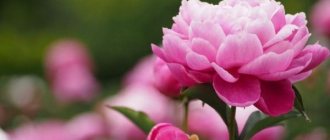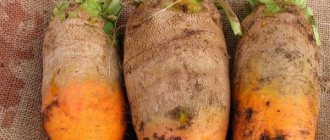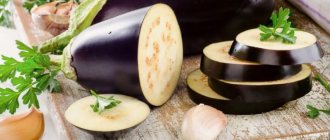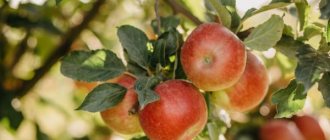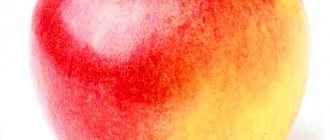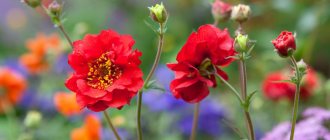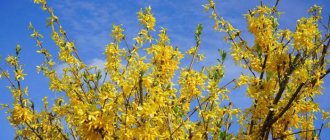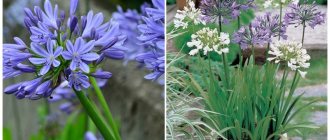Botanical description
When ripe, the seeds of the plant are covered with a fiber resembling cotton wool, hence the name. The cottonweed was very similar to the kendyr plant, which grows in Syria, so it was called Syrian. Later, the difference between the plants was established, but they decided not to change the name “Syrian cottonweed.”
Syrian cottonweed belongs to a perennial herbaceous plant and belongs to the Kutrov family. It is widespread in America, Africa, the Baltic states, the Caucasus, and Belarus. In its natural environment it grows in North America. It is a noxious weed that is under serious control.
When it gets into crops, cottonweed negatively affects the development of crops, significantly reducing their yield.
The thickened straight stems of the cottonweed can reach a height of 1.5-2 m. The leaves of the cottonweed are compacted, oblong, bright green, with a well-defined central vein and wavy edges, they are about 20 cm long and about 12 cm wide.
Cottonweed flowers are pink, purple or reddish in color. They resemble small stars, which are connected into umbrella inflorescences that open at the tops of the shoots. The flowering of the plant starts in July and lasts exactly a month. The flowers emit a pleasant aroma, similar to the aroma of hyacinth.
The cottonweed fruit ripens in the form of an oblong capsule with a corrugated surface, its length is approximately 12 cm. When fully ripe, the capsule cracks on the sides, and seeds covered with long white fibers, similar to cotton wool, spill out of it. They are easily carried by the wind and germinate everywhere.
The plant grows quickly, and if the seeds fall on agricultural land, this plant turns into a harmful weed that is difficult to get rid of.
In the aboveground parts of the milkweed there is milky juice, which swallows extract and lubricate the eyes of their chicks with it so that they open faster. That is why the plant received its popular name - swallowtail.
In various countries, young shoots of the plant are usually eaten boiled. They taste similar to asparagus and are often used as an addition to salads.
Syrian cottonweed is an excellent honey plant. The honey turns out very tasty and fragrant, it is not candied. From 1 hectare you can get about 200 kg of honey.
Brief dossier
Name: asclepia (asclepia, received in honor of Aesculapius for its widespread use in folk and official medicine)
Nicknames: cottonweed (the plant received it due to the cotton wool-like edge on mature seeds), “fragrant bouquets” (for its original aroma); Syrian milkweed is known under the names of aesculapian, swallow and milkweed
Plant type: general-purpose herbaceous perennial
Diversity: about 80 species, of which only three species are used in ornamental gardening; one species is a flyer
The best representatives: Syrian and meat-red milkweed
General characteristics: powerful and tall herbaceous perennial with thick shoots, opposite sessile or whorled large lanceolate leaves and multi-flowered umbels of small, numerous star-shaped flowers
Decorative advantages: lush foliage, unusual long-term flowering and a delicate aroma that evokes associations with sweets and confectionery
Height: from 50 to 150 cm, most often about 1 meter
Type of leaves: lanceolate, elongated ovoid or ellipsoid, up to 12 cm long, with a sharp tip, prominent central vein, rich color; leaves form a lush and dense mass
Type of flowering: multi-flowered umbels about 6-8 cm in diameter, loose, graceful; centimeter star-shaped flowers are collected in inflorescences
Color range: white, yellow, orange, pink colors, often the outer side of the petals is darker, making the buds seem contrastingly saturated in relation to the blooming flowers
Flowering time: summer or autumn, for most species - July-August
Status: partner landscape plant or soloist for landscape spots
Scope of use: as a soloist or for group planting in landscape and modern styles, occasionally in country gardens; The cotton grass is planted in landscape groups and to create spots and large tracts, in the background of flower beds, in the middle line of double-sided mixborders or in the background of ridges adjacent to buildings, near terraces and recreation areas to create a fragrant flair
Principles for selecting partners: they are selected only from among large, unafraid of competition and densely planted perennials that can “withstand” a powerful and large partner
Companion plants: tall bells, miscanthus, veronicastrum, aconite, reed grass, tall pearl barley, physiostegia, echinacea
Other uses:
- honey crop that attracts bees and butterflies;
- medicinal plant;
- creates a fragrant background;
- The cottonweed was grown as a commercial crop in the 17th-19th centuries.
Demanding: an unpretentious plant that requires virtually no care
Difficulty of growing: low, even inexperienced gardeners can grow cotton grass
Soil: any water- and breathable soil, prefers loam and slightly acidic soils
Lighting: as bright as possible, sunny location
Watering: only during severe droughts
Feeding: once a year in early spring with complex mixtures
Other care components: trimming peduncles after flowering, one-time fertilizing, weeding
Winter hardiness: high, requires only pre-winter mulching
Reproduction: dividing bushes, seeds or rhizome cuttings
Precautions: The milky sap causes irritation, especially if it comes into contact with the skin in combination with sun exposure.
Benefits of Syrian cottonweed
Even in ancient times, people used the milky juice of the cotton grass to produce rubber. Its juice contains particularly valuable substances - elastomers, which are necessary for the production of rubber. There were large plantations of this plant, but over time new materials appeared and the need for this disappeared.
The plant also contains valuable essential oils, which many perfume companies use in their production.
The cotton wool is also successfully used in cosmetology. Its extracts are included in various masks, creams, tonics, the effect of which promotes skin rejuvenation.
The fluff formed around mature cottonweed seeds was used to fill mattresses and pillows. Subsequently, it was replaced with cotton wool, padding polyester and other modern materials.
Coarse fibers from the stems of cottonweed are used to produce ropes and fabrics.
Some parts of the plant contain the insecticide asclepialin, so the milkweed is not susceptible to attacks by harmful insects, with the exception of spider mites.
Syrian milkweed is quite actively used in folk medicine. It has antimicrobial, anti-inflammatory, wound healing and laxative properties. There are recipes that include cotton wool to alleviate the condition of diseases of the respiratory system, heart and blood vessels, to increase immunity and generally strengthen the body.
Landscape designers often use Syrian cottonweed to decorate the garden. In single plantings it creates clearly visible bright spots in the garden. In group plantings, cotton grass can fill voids and shade other plants in the flowerbed. Milkweed goes well with echinacea, meadowsweet, yarrow, aconite, bellflower and other perennials.
General information about Asclepis
Asklepias - lat. Asclepias
Cottongrass is a perennial evergreen shrub plant and belongs to the swallow family.
Asklepias can reach a height of more than 1 meter. The bushes are densely growing, have erect stems and elongated elliptical leaves up to 15 cm long. Small flowers are collected in dense, numerous umbels. Flower colors vary: yellow, orange, purple, pink, red, white.
Flowering begins in summer and continues until mid-autumn. The cottonweed actively produces honey. Bees and butterflies flock to its fragrant aroma. After the flowers are shed, seed pods covered with fluff form in their place. In some countries, this down is collected and used to make pillows, blankets and other textile products.
The shrub is frost-resistant, although in particularly cold regions its roots must be insulated.
Recently, landscape designers have begun to actively use asklepis, especially when creating mixborders. High decorative value and unpretentiousness are the main advantages of the plant. The shrub peacefully coexists with many other garden crops.
Conditions for growing Syrian cottonweed
Syrian cottonweed behaves very aggressively in the garden; it can easily crowd out other useful plants in a short period of time. To prevent this from happening, you need to choose the right area for planting.
It should be noted that cottonweed seeds scatter at a distance of 1 m from the main plant. It should be planted on a hill, in a well-lit place, preferably near outbuildings, where unsightly fragments need to be decorated.
Syrian cottonweed grows almost everywhere. But it develops best on slightly acidic loams. But the close proximity of groundwater is undesirable for it.
Growing Syrian cottonweed
- Watering. The Syrian cottonweed will have enough natural moisture from the rains, it will not need additional watering, and it can easily tolerate drought. You can water it only after planting and replanting.
- Feeding. Gardeners recommend feeding cottonweed three times a season. In the spring, minerals are added, before the buds appear, they are fed with urea and potassium sulfate, and after flowering is completed, nitrophoska is added to the soil.
- Trimming. The cottonweed does not tolerate pruning very well. They only perform sanitary pruning after the end of winter, removing broken and frozen branches. Be sure to remove faded inflorescences to preserve the decorative appearance.
- Pest protection. The most common enemy of cottonweed is the spider mite. For prevention, it will be enough to periodically spray the plant with an infusion of onion peels. Take 100 g of onion peel, and pour 5 liters of water into it, leave for 5 days, filter and spray. If this remedy does not help, then use neoron. Usually two treatments with neoron are enough to get rid of the pest.
- Preparing for winter. Syrian milkweed tolerates winter well without shelter. In regions with harsh winters, you can mulch and simply wrap the plant.
In order for the growing cotton grass in your landscape design to successfully overwinter and delight you with its lush bush next season, it needs to be provided with shelter
Reproduction of Syrian cottonweed
- Seeds. Reproduction of cottonweed using seeds is rarely used, because a plant obtained from seeds will bloom only in the third year of life. Seeds for seedlings are sown in April. When the soil has already warmed up sufficiently, the seedlings are moved to open ground. Some gardeners sow seeds directly into the soil, and after 2-3 weeks the first shoots appear.
- Cuttings. Cuttings are taken from young green shoots of cottonweed in June and immediately placed in moist soil until the milky sap dries out. Usually, rooting occurs after 2 weeks.
- Rhizome division. This method is used in spring or autumn, when flowering is completed. Dig up the root, divide it into parts 15 cm long, and plant them in a designated place in the garden. The plant will bloom next year.
The cottonweed reproduces quite successfully by seeds
Harvesting seeds, flowers, roots
The rhizomes of Syrian cottonweed are harvested in April, when young shoots appear. They are dug up, cleared of soil, cut into pieces and thoroughly dried. Cottonweed seeds are collected as they ripen and then dried in dryers in the attic.
Store raw materials in paper or fabric bags for no more than 2-3 years. The inflorescences are collected, dried and stored for no more than 1 year.
Ecology
Syrian cottonweed grows well in open areas. It is unpretentious to soils, but grows better on cultivated lands. This is a drought-resistant and frost-resistant plant; it overwinters without damage and does not require shelter. True, its first wintering is delayed, and its seedlings restore vegetation only at the beginning of summer, in subsequent years - in April-May. The cottonweed is unpretentious to light and moisture. Withstands exposure to direct sunlight for long periods. Comfortable growth zones for cottonweed are areas with dry, cold or warm conditions, as well as forest areas. This species is also tolerant of precipitation; it needs from 400 to 1200 mm per year, the optimal average annual temperature is 8-14 ° C, soil pH is from 5.5 to 7.3.
Folk recipes with Syrian cottonweed
- Tincture of leaves. To regulate the functioning of the nervous, cardiovascular and urinary systems, a tincture of cottonweed leaves is used. For this, 1 tsp. crushed leaves, pour a glass of boiling water and leave for 1 hour. Take 1/3 cup of tincture 3 times a day.
- Aqueous extract from seeds. To alleviate the condition of various skin diseases, an aqueous extract of the seeds is prepared. 2 tsp. crushed seeds should be poured with 1 cup of boiling water and left for 1 hour. Using the extract, lotions and compresses are made, and the affected areas of the skin are wiped with it.
- Root powder. With urinary retention, coughs, colds and pneumonia, dried cottonweed root powder will help. The powder taken from the tip of a knife is washed down with warm water.
- Alcoholic extract from the roots. For arrhythmia, tachycardia and other diseases of the heart and blood vessels, an alcohol tincture of ground cottonweed root is used. To prepare it, 10 g of rhizome powder is placed in 100 ml of alcohol, infused for 2 weeks, filtered, and the infusion is taken 10 drops 3 times a day.
Asklepios Clinics in Hamburg - doctors who create the country's reputation
Hamburg is the second largest city in Germany, but the first in the country in terms of healthcare. It owes much of its status as “the best in medicine” to the Asklepios network of clinics. It is in Hamburg that outstanding doctors with an excellent reputation work and half of the operations in the country are performed. From year to year, Asklepios takes leading positions in the list of the best clinics in Germany. When you hear praise about German medicine, in three cases out of five we are talking about Asklepios. This is the largest medical cluster in Europe. At the same time, Asklepios is the only large German network of clinics that is actively working at the international level.
Contraindications
Since cotton wool is slightly toxic, it is recommended to use it in a volume of no more than 20 drops per day. Allergy sufferers should take it with caution. Cottonweed juice may cause skin irritation.
Preparations containing Syrian cottonweed for high blood pressure are strictly prohibited. Childhood and pregnancy are also contraindications to the use of cotton wool. Before starting treatment with this plant, you should consult your doctor.
X
Diseases and pests
During the cultivation of cottonweed, any diseases are rarely observed. The main cause of lesions is improper care.
Most often the plant is damaged by:
- Whitefly. It feeds on the juice of the honey plant, which causes it to wither. It is effective to use such drugs as Actellik, Fufanon and Rovikurt.
- Spider mite. Appears in dry weather. Thin cobwebs entwine the plant, its leaves wither and its shoots become deformed. Acaricides (Fitoverm or Aktara) will help defeat these pests.
- In a damp environment, bushes are affected by mold. Therefore, containers with seedlings are usually placed in a dry place. During drought, it suffers from yellowing and falling leaves. Regular spraying of foliage will help.
Who travels from Russia to Germany for treatment?
In order to leave Russia for treatment in Germany, you need compelling reasons. A large number of patients come to Asklepios to treat oncological diseases; there are many requests for cardiology, neurosurgery, ophthalmology, and neurology. The Asklepios Cancer Center in Hamburg provides patients with access to best practices, the latest medical advances and the knowledge of all specialists in the country. The main thing that cancer patients come here for is caring. It is a matter of honor for Asklepios doctors to do more than is possible.
And technical equipment is just a tool in the hands of masters. Yes, there are all the modern achievements of technical thought, but recovery is achieved not by methods or robots, but by doctors who develop their own treatment regimen for each patient and do not give up even in situations that seem critical.
Who created Germany's leading medical concern? Asklepios has one owner, and this is what determined the path of development of the clinics. For Dr. Bernard Breuermann, making Germany's most modern medical center has become a mission. For a quarter of a century, all profits from the operation of clinics have been directed to the development of medicine, innovation, development, the purchase of the best equipment, high salaries and interesting tasks that attract the world's leading specialists.
In Germany, Asklepios is synonymous with the concept of “advanced medicine”: this largest cluster of hospital institutions in Europe covers almost all areas of medical specialization from ophthalmology to dentistry.
Asklepios focuses on the patient's health, not his illness. This difference, insignificant at first glance, became the basis for the popularity of the network of clinics: the ability to see beyond a person’s diagnosis, to do everything in his power to help him be as healthy as possible, and concern for the personal history of each person of all employees, without exception, from eminent doctors to nurses on duty.
At the same time, great importance is attached to the safety and impeccable quality of diagnosis and treatment - clear protocols exclude the possibility of error or the negative influence of the “human factor”.

